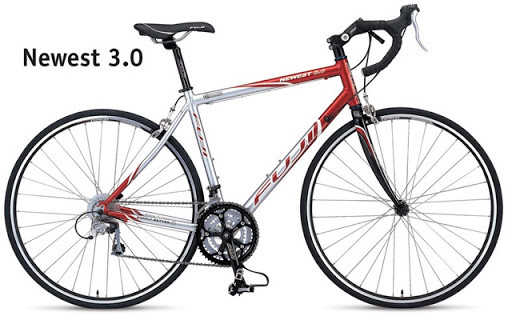Traveling can throw a wrench into any consistent training routine. For runners and swimmers, staying on track isn’t too difficult – a pair of running shoes works almost anywhere, and pools can be located with a bit of online searching. However, cyclists, especially road cyclists, face a bigger challenge: transporting or finding a suitable bike. This was the dilemma I faced during frequent trips to Seattle, needing a reliable road bike without breaking the bank.
Initially, renting seemed like the easiest solution. But the costs quickly added up, reaching $40-$60 for just two days. This unsustainable expense pushed me to explore more economical, long-term options for having a road bike available in Seattle for my training needs. Buying a new, high-end road bike wasn’t justifiable either, as this would be a secondary bike used only a few times a month.
My search for an affordable road bike began with online classifieds like Craigslist. While potentially budget-friendly, the fleeting nature of good deals and the logistical challenges of coordinating purchases from afar made Craigslist impractical. eBay was the next avenue, revealing some attractively priced new bikes under $500. However, expert opinions raised concerns about the quality of components at that price point.
This led me to brick-and-mortar bike shops. Used bikes at local stores proved surprisingly expensive. Performance Bike, known for its competitive pricing and convenient locations (including several in Seattle and one near my home in DC), became a promising option. Their lifetime free maintenance offer was also a significant draw for someone like me, still developing bike maintenance skills.
The most affordable road bike at Performance Bike was the Fuji Newest 3.0. Priced at $450 (frequently on sale), it looked like a viable solution. Factoring in loyalty points, the price dropped even further, nearing $375. At that point, assuming it wouldn’t fall apart immediately, the Fuji Newest 3.0 seemed like a good deal, and I decided to purchase it.
 Fuji Newest 3.0 road bike showcasing its aluminum frame and Shimano components
Fuji Newest 3.0 road bike showcasing its aluminum frame and Shimano components
The Fuji Newest 3.0 boasts the following key components:
- Frame: Fuji Altair 1 Compact Aluminum
- Wheels: Formula Alloy Road with Kenda K-152, 700 X 25c tires
- Fork: Bonded Carbon
- Shifters/Brake Levers: Shimano 2203, 24-speed
- Derailleurs: Shimano Sora
- Crankset: Fuji Forged Aluminum Road 30/42/52T Chainrings
- Brake Set: ProMax Dual Pivot Forged Road
After logging around 200 miles on the Fuji Newest 3.0 over several months, my feelings are mixed. While the bike functions adequately and keeps pace with fellow cyclists in Seattle, several minor issues detract from the overall experience.
- Weight Penalty: The Fuji Newest 3.0 is noticeably heavier than my primary Fuji Roubaix RC, tipping the scales at 6.5 pounds more. This weight difference is palpable on both climbs and flat roads, requiring more effort to maintain speed and tackle inclines.
- Tire Choice: The stock tires are wider than my preference and feature unnecessary tread elements. While easily remedied with a tire swap, it’s worth noting the out-of-the-box tire setup wasn’t ideal for my taste.
- Redundant Brake Levers: The handlebars are equipped with two sets of brake levers – one on the drops and an additional set on the horizontal bar. The purpose of the second set remains unclear, seeming like unnecessary weight and clutter.
- Uncomfortable Stock Saddle: The original saddle was excessively padded and unsuitable for a road bike. It was immediately replaced before the first ride with a more performance-oriented option.
- Shifting Inconsistencies: The Shimano 2203 shifters and Sora derailleurs, while functional, exhibit shifting issues. Achieving a smooth upshift to the large front chainring is finicky and gear-dependent, occasionally resulting in dropped chains. Despite adjustments at Performance Bike, the inherent limitations of the component quality were acknowledged as the primary cause of these shifting problems.
- Triple Crankset Configuration: The triple chainring crankset, while offering a wide gear range, is generally considered outdated for modern road cycling, adding unnecessary complexity and weight compared to a double chainring setup.
To be fair, the Fuji Newest 3.0 serves its purpose as a secondary bike for training in a different location. It even performed adequately in a sprint triathlon. However, the accumulation of minor annoyances prevents me from truly enjoying riding it. While functional, it lacks the excitement and eagerness that makes me want to ride for the pure pleasure of it.
In hindsight, investing a few hundred dollars more in a higher-quality road bike might have been a worthwhile decision, leading to greater riding satisfaction.
Who is the Fuji Newest 3.0 Road Bike For?
The Fuji Newest 3.0 is best suited as an entry-level road bike for beginners or cyclists needing a budget-friendly, secondary bike. It’s a reasonable option for those unsure about committing to road cycling and want to test the waters without a significant financial investment. However, experienced cyclists or those seeking a more refined riding experience may find its limitations outweigh its affordability.
Conclusion
The Fuji Newest 3.0 road bike is a functional and affordable option, particularly for beginners or as a secondary bike. It gets the job done and allows you to ride. However, compromises in component quality and overall weight result in a less-than-inspiring riding experience. While it addresses the need for a budget-friendly road bike, riders seeking higher performance and enjoyment might consider exploring slightly more expensive alternatives for a more rewarding cycling journey.
